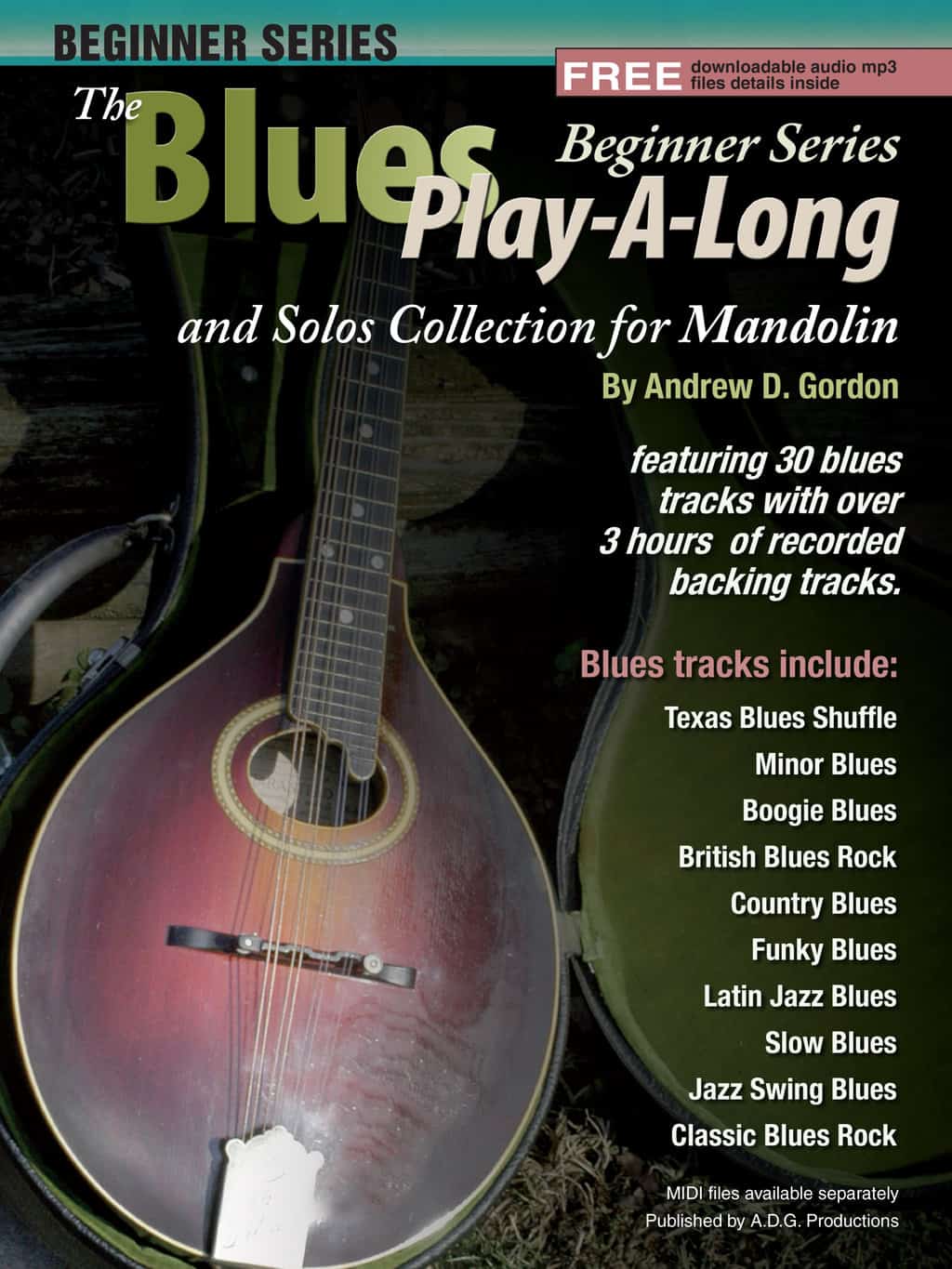As a mandolin player, I’m always looking for new and exciting ways to explore my instrument. One of the most interesting genres I’ve found is blues mandolin. If you’re like me and want to unlock the secrets of blues mandolin playing, then this comprehensive guide is for you. In this article, I’ll show you how to play blues mandolin by exploring the techniques, styles, and history of this remarkable genre. I’ll also provide helpful tips and tricks, so you can start playing blues mandolin like a pro!
Basic Blues Mandolin Chords
- G7 – G, B, D, F
- C7 – C, E, G, Bb
- D7 – D, F#, A, C
- E7 – E, G#, B, D
- A7 – A, C#, E, G
These five chords form the foundation of blues mandolin. They are the most commonly used chords in the blues and are essential for any player. Knowing these chords will give you the ability to play most blues songs. Additionally, they are easy to learn and can be played in any key.
Common Blues Scales and Chord Progressions
- The Minor Pentatonic Scale: The most popular scale used in blues music is the Minor Pentatonic Scale. It consists of five notes, with the root note being the tonic note. It can be played in a variety of ways, from a one-octave pattern to a two-octave pattern.
- The Mixolydian Scale: The Mixolydian Scale is a blues scale that is used to add a more “open” sound to the music. It contains seven notes, with the root note being the tonic note. It is often used to add a bit of a “jazzy” feel to the music.
- The Blues Scale: The Blues Scale is a six-note scale that is used to create the “bluesy” sound of the blues. It contains a flatted third and fifth, as well as an augmented fourth. This scale can be used to create a variety of different sounds.
- The Major Pentatonic Scale: The Major Pentatonic Scale is a five-note scale that is used to create a more “upbeat” sound. It contains the same notes as the Minor Pentatonic Scale, but it has a different sound. It is often used to create a more “happy” sound.
- Chord Progressions: Chord progressions are essential to the sound of blues music. Common progressions include the 12-Bar Blues, the 8-Bar Blues, and the 4-Bar Blues. Each of these progressions consists of a series of chords that create the basis for the melody of the song.
Techniques for Improvising
- Listen to the chord progression before playing.
- Start by playing simple phrases and gradually add complexity.
- Try different techniques, such as bends, slides, and trills.
- Focus on the flow of your phrases and the notes you choose.
- Mix up the rhythm of your phrases to create interesting riffs.
- Experiment with both diatonic and chromatic notes.
- Use a combination of scales, arpeggios, and licks.
- Focus on playing the notes that sound good and that fit the chord progression.
- Practice soloing over different chord progressions.
Utilizing Riffs and Runs
Riffs and runs are essential elements of the blues mandolin style. A riff is a short, repeated phrase often based on the chords of the song. It may also use a short melodic phrase that is repeated and varied. A run is a melodic phrase that is played over a single chord or two adjacent chords. Both riffs and runs can be used to add interest, drive and emotion to a solo. When playing a solo, the player should pay attention to the tonal qualities of the notes they are playing. Using notes that are in the same tonal family can help to create a more cohesive sound. The player should also experiment with different rhythms and articulations to create a unique sound. When playing a solo, the player can also use slides and other techniques to add a unique, bluesy element to the solo.
Accompanying Vocals
| Technique | Description |
|---|---|
| Humming | Keeping the same pitch as the mandolin, singing without lyrics. |
| Moan | Modulating the pitch of the vocal part to create a bluesy sound. |
| Call and Response | Alternating between singing a phrase and playing a phrase. |
Accompanying vocals are an important part of the blues mandolin sound. They provide a counter-melody and a contrasting texture to the mandolin. There are a few techniques used when accompanying on vocals: humming, moaning, and call and response. Humming is keeping the same pitch as the mandolin and singing without lyrics. Moaning is modulating the pitch of the vocal part to create a bluesy sound. And call and response is alternating between singing a phrase and playing a phrase. These techniques are essential for creating a unique blues mandolin sound.
Developing a Personal Style
| Step | Description |
| 1 | Listen to a variety of blues music. Take in the different styles and find something inspiring. |
| 2 | Transcribe solos and licks from blues mandolin players that you like. |
| 3 | Practice the solos and licks to get comfortable with them. |
| 4 | Start to incorporate the licks into your own improvisations. |
| 5 | Experiment with different techniques and sounds to find your own unique style. |
| 6 | Develop a personal sound by combining different elements of blues mandolin. |
Developing a personal style on the blues mandolin requires a combination of listening, transcribing, and experimentation. Listen to a variety of blues music to get inspired. Transcribe solos and licks from blues mandolin players that you like. Practice the solos and licks to get comfortable with them. Start to incorporate the licks into your own improvisations. Experiment with different techniques and sounds to find your own unique style. Develop a personal sound by combining different elements of blues mandolin.
Soloing Basics
- Learn to play the basic Major and Minor Pentatonic Scales and Blues Scales.
- Practice playing the scales in all positions.
- Learn how to use hammer-ons, pull offs, slides, and bends to create blues phrases.
- Learn how to use vibrato to add expression to your soloing.
- Learn the basic blues chord progression in all keys.
- Practice improvising solo lines over the chord progression.
- Experiment with different note choices and rhythms.
- Listen to recordings of blues mandolin players to learn new ideas and techniques.
Practice Techniques
- Start by learning the basics of improvisation and scale patterns.
- Practice the blues scale patterns over each chord in a blues progression.
- Practice playing the blues scale patterns in time with a metronome.
- Work on incorporating slides, vibrato, and other techniques into your playing.
- Experiment with different rhythms and tempos.
- Learn to play the blues with a pick and with your fingers.
- Transcribe and learn blues solos by ear.
- Practice soloing over a backing track or jam track.
- Learn how to play the blues in different keys.
- Practice playing with other musicians.
Frequently Asked Questions
What is the Best Way to Learn the Basics of Playing Blues Mandolin?
The best way to learn the basics of playing blues mandolin is to purchase a book or instructional video specifically designed for the instrument. This will ensure that the information is relevant and up-to-date, and that the tutorial is tailored to the skill level of the student. Additionally, online lessons and tutorials are a great way to get started, as they typically contain video and audio examples that can be used to practice and develop technique. Finally, seeking out a qualified teacher who specializes in blues mandolin is a great way to learn the basics and further develop playing skills.
How can I develop my technique for playing blues mandolin?
The best way to develop your technique for playing blues mandolin is to practice regularly and focus on the fundamentals. Start by mastering basic blues scales and chords and then move on to more complex techniques, such as using slides, hammer-ons and pull-offs, and vibrato. Listen to your favorite blues mandolinists and emulate their techniques and sound. Additionally, learning blues tunes by ear is an invaluable skill that can be developed over time. Finally, participate in blues jam sessions and open mics to gain experience and hone your skills.
What techniques should I use to get the most out of my blues mandolin playing?
Practice blues scales and chords to develop your blues soloing skills and learn to play in different positions on the mandolin. Start with simple licks and progress to more complex licks to increase your repertoire. Develop an understanding of timing and rhythm, as well as the use of dynamics. Learn different improvisation techniques and practice them with other musicians. Utilize various picking techniques to add texture to your playing. Experiment with different tunings, chord progressions, and picking patterns to find your own unique sound. Finally, focus on listening to other blues mandolinists to learn from their playing.
How do I create interesting improvisations with blues mandolin?
To create interesting improvisations with blues mandolin, focus on the form and rhythm of the song. Listen to recordings of the blues and play along, experimenting with different techniques. Use bends, slides, and vibrato to add emotion and texture to your playing. Play in different keys to challenge yourself and develop your improvisation skills. Also, practice scales and arpeggios in both the major and minor blues scale. Incorporate these scales into your playing to create interesting and varied improvisations.
What are the Essential Elements of Blues Mandolin Playing?
Blues mandolin playing is distinctive and an integral part of the genre. It involves a combination of traditional mandolin techniques, such as tremolo, slides, and phrase ornamentation, with the use of blues-style licks and improvisation. To master blues mandolin playing, it is important to understand its core elements: timing and rhythm, chords and chord progressions, tone and dynamics, and improvisation.
Conclusion
Mastering the blues style on the mandolin requires practice, patience, and dedication. Following the techniques outlined in this guide will help you develop the essential skills to play blues mandolin. Focus on learning basic riffs, scales, and chords, and use them to create your own unique blues sound. With the right attitude, dedication, and a willingness to experiment, you can become a skilled blues mandolin player.







